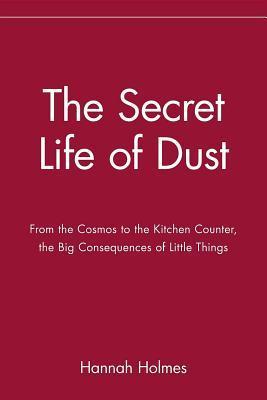
This book explores all aspects of all types of dust, from the cosmic dust that formed the origins of the universe, through desert dust, fungal spores and smoke from forest fires to pollution and household dust. The more I read, the more I became aware of the risks posed by all these types of dust. It's a sobering read. I'll just share some interesting facts here.
Astonishing amounts of dust are produced from dried out lakes, for example the Aral Sea, which has been massively reduced in size due to overextraction of water for irrigation, produces an estimated 150 million tons a year of dust, heavily laden with toxic pesticides. Up to "half the desert dust in the air today may rise from land damaged by human use."
Natural dusts from different places have unique mineral signatures and combined with the differing sources of pollution in different areass mean that rain varies around the world in terms of the chemicals and particles contained in raindrops.
The dusts produced from industrial processes have long been associated with illnesses, particularly asbestosis. I was surprised to read here how long humans have been using asbestos, two thousand years ago, Romans were including asbestos in funeral shrouds and even back then the risks were recognised by the Roman naturalist Pliny the Elder, who noticed that "the unfortunates who mined and wove asbestos were a sickly lot." Yet even now, asbestos creates problems. It can take us a long time to really address problems...
Asthma of course is another ongoing health problem strongly associated with dusts, some of them natural. The last chapter of the book looks at household dusts, and how these are affected by the appliances we use and our approach to household cleanliness.
This book is very US-centric but is a fascinating read, wherever you live and may make you more aware of all the dust around you.
The Secret Life of Dust by Hannah Holmes, published (2001) by Wiley.
No comments:
Post a Comment